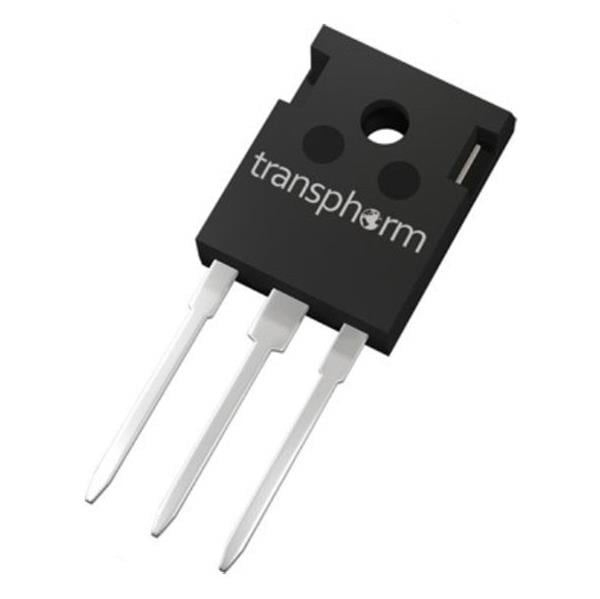The evolution of audio amplification has taken a significant leap forward with the introduction of Gallium Nitride (GaN) Field-Effect Transistors (FETs) in Class D amplifier designs. This revolutionary semiconductor technology is transforming the landscape of high-performance audio equipment, offering unprecedented efficiency, sound quality, and compact form factors that were previously unattainable with traditional silicon-based designs.
Understanding GaN FET Technology
Gallium Nitride represents a fundamental departure from conventional silicon semiconductor technology. As a wide-bandgap semiconductor material, GaN possesses inherent physical properties that make it exceptionally well-suited for high-frequency switching applications. Unlike silicon MOSFETs, which have dominated power electronics for decades, GaN FETs can switch at significantly higher frequencies while maintaining superior efficiency and generating less heat.
The core advantage of GaN technology lies in its material properties. GaN has a wider bandgap (3.4 eV) compared to silicon (1.1 eV), enabling it to handle higher voltages and temperatures while maintaining stability. Additionally, GaN devices exhibit much lower on-resistance (RDS(on)) and reduced parasitic capacitances, which directly translate to faster switching speeds and lower power losses.
Class D Amplification: The Foundation
Class D amplifiers, often mischaracterized as “digital amplifiers,” are actually switching amplifiers that use pulse-width modulation (PWM) to represent the audio signal. The fundamental principle involves rapidly switching the output transistors between fully on and fully off states, theoretically achieving near-perfect efficiency since the transistors dissipate minimal power when fully conducting or completely blocking current.
However, real-world implementations of Class D amplifiers face several challenges that limit their performance. These include switching losses during transitions, dead-time distortion, and electromagnetic interference (EMI). Traditional silicon MOSFETs, while capable, impose certain limitations on switching frequency and efficiency that GaN technology can overcome.
The GaN Advantage in Class D Applications
Superior Switching Characteristics
The most significant breakthrough that GaN brings to Class D amplifiers is its near-ideal switching behavior. GaN transistors can switch on and off far faster than their silicon counterparts, with transition times measured in nanoseconds rather than tens of nanoseconds. This rapid switching capability allows GaN devices to produce switching waveforms that closely approximate perfect square waves, dramatically reducing distortion and improving audio fidelity.
The faster switching speeds enable operation at much higher PWM frequencies—typically 800 kHz or higher for GaN-based designs compared to 400 kHz for traditional Class D amplifiers. Higher switching frequencies push the noise spectrum well above the audible range, simplifying output filter design and reducing the size of passive components required.
Reduced Dead Time and Lower Distortion
One of the most critical advantages of GaN FETs in audio applications is their ability to operate with significantly reduced dead times. Dead time—the brief period when both upper and lower switches in a half-bridge configuration are turned off to prevent shoot-through—is a major source of distortion in Class D amplifiers.
Silicon MOSFETs require relatively long dead times (typically 50-100 nanoseconds) due to their slower switching characteristics and the presence of body diodes with reverse recovery times. GaN FETs, lacking body diodes and switching much faster, can operate with dead times as short as 10-20 nanoseconds. This reduction in dead time directly translates to lower total harmonic distortion (THD) and improved audio quality, particularly at higher frequencies where distortion artifacts are most noticeable.
Enhanced Efficiency and Thermal Performance
GaN FETs demonstrate superior efficiency across a wide range of operating conditions. The combination of lower switching losses, reduced conduction losses, and minimal dead-time losses results in overall efficiencies exceeding 96% in well-designed implementations. This high efficiency has several practical benefits:
Thermal Management: Lower losses mean less heat generation, often eliminating the need for bulky heatsinks. Many GaN-based Class D amplifiers can operate at full power without any forced air cooling, enabling more compact and aesthetically pleasing designs.
Power Density: The combination of reduced component sizes (due to higher switching frequencies) and elimination of heatsinks allows for significantly more compact amplifier designs without sacrificing power output.
Energy Efficiency: Particularly important for battery-powered applications, the higher efficiency of GaN amplifiers extends operating time and reduces charging requirements.
Technical Implementation Considerations
Driver Circuit Requirements
While GaN FETs offer superior performance, they do require careful consideration in driver circuit design. GaN devices typically operate at lower gate voltages (typically 5-6V) compared to silicon MOSFETs (10-12V) and have different gate charge characteristics. Modern GaN-optimized gate drivers are specifically designed to provide the precise timing and voltage levels required for optimal performance.
Output Filter Design
The higher switching frequencies enabled by GaN technology allow for more sophisticated output filter designs. The increased frequency separation between the switching frequency and the audio band enables the use of smaller inductors and capacitors while maintaining excellent filtering performance. This not only reduces component size and cost but also improves the amplifier’s transient response.
EMI Management
While GaN’s fast switching edges offer performance benefits, they can also present electromagnetic interference challenges. Proper PCB layout, including careful attention to ground planes, component placement, and trace routing, becomes even more critical with GaN devices. However, the higher switching frequencies can actually simplify EMI filter design by moving the fundamental switching frequency further from sensitive frequency bands.
Real-World Performance Benefits
Audio Quality Improvements
Listeners consistently report that well-designed GaN Class D amplifiers exhibit characteristics traditionally associated with high-end linear amplifiers. The combination of ultra-low distortion, excellent transient response, and minimal noise floor creates a listening experience that challenges preconceptions about switching amplifier sound quality.
The reduced dead-time distortion is particularly beneficial for complex musical passages and low-level detail retrieval. Many audiophiles describe GaN amplifiers as having a more “analog” or “tube-like” character, despite their switching topology.
Form Factor Advantages
The compact size enabled by GaN technology has opened new possibilities for amplifier integration. High-power amplifiers can now be incorporated directly into speakers, enabling true active loudspeaker designs with minimal compromise. Similarly, the reduced size and weight make GaN amplifiers ideal for portable and automotive applications where space and weight are critical considerations.
Market Impact and Industry Adoption
The Class D audio market, valued at approximately $3.6 billion as of 2024, is experiencing rapid growth driven largely by GaN technology adoption. Major audio manufacturers are increasingly incorporating GaN-based designs into their premium product lines, recognizing the technology’s ability to deliver high-end performance in compact, efficient packages.
Companies like GaN Systems, Infineon (through their CoolGaN technology), and EPC (Efficient Power Conversion) are leading the development of audio-optimized GaN devices and reference designs. These comprehensive solutions include not only the transistors themselves but also optimized gate drivers, power supplies, and complete amplifier modules that enable audio manufacturers to quickly implement GaN technology in their products.
Looking Forward: Future Developments
The evolution of GaN technology in audio applications continues to accelerate. Current research focuses on several key areas:
Higher Integration: Development of complete amplifier-on-chip solutions that integrate GaN switching devices, control circuits, and protection functions in single packages.
Cost Reduction: As manufacturing scales increase and processes mature, GaN device costs continue to decline, making the technology accessible for mainstream audio products.
Performance Optimization: Ongoing improvements in device characteristics, including further reductions in switching losses and enhanced thermal performance.
Smart Integration: Development of GaN amplifiers with integrated digital signal processing capabilities, enabling more sophisticated audio processing and system optimization.
Conclusion
GaN FET-based Class D amplifier technology represents a paradigm shift in audio amplification, offering a unique combination of efficiency, performance, and compact form factor that was previously unattainable. The technology’s ability to deliver high-end audio quality while maintaining the practical advantages of switching amplifiers positions it as a transformative force in the audio industry.
As the technology continues to mature and costs decrease, GaN-based Class D amplifiers are poised to become the standard for high-performance audio applications across market segments. From high-end audiophile systems to portable devices and automotive applications, GaN technology is redefining what’s possible in audio amplification, bringing together the best aspects of efficiency and fidelity in a single, elegant solution.
The future of audio amplification is clearly being written in gallium nitride, and the results speak for themselves—literally.


